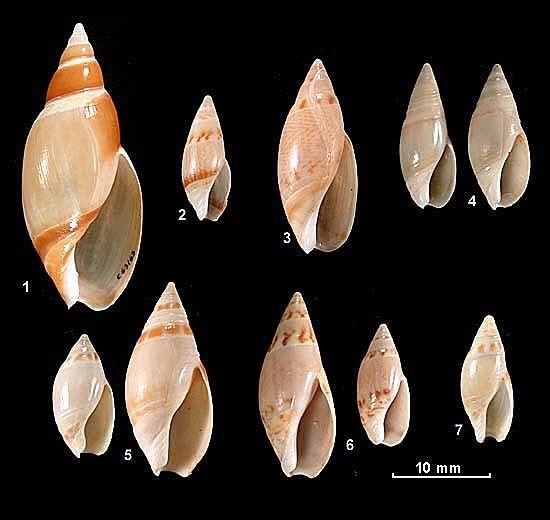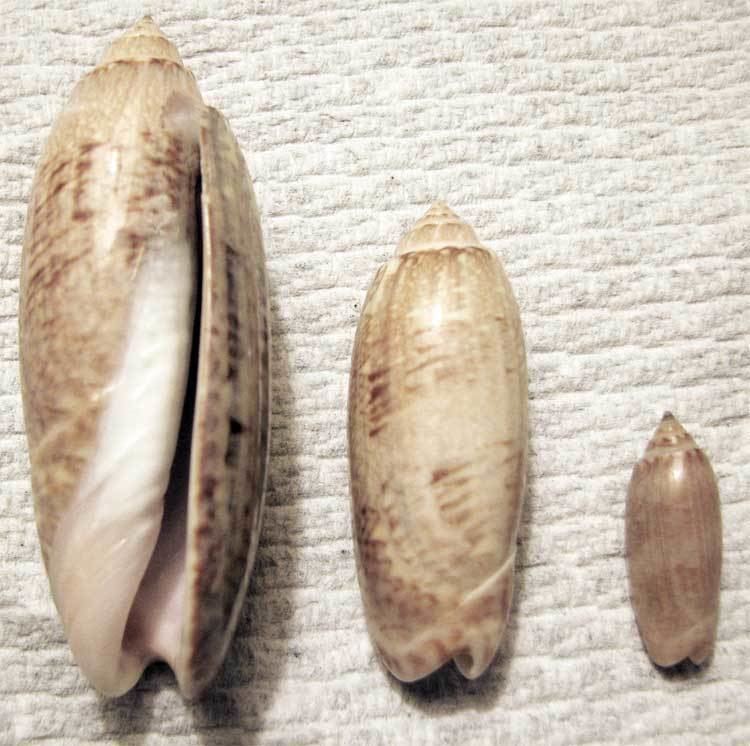Scientific name Olividae | Superfamily Olivoidea Rank Family | |
 | ||
Lower classifications Lettered olive, Oliva oliva | ||
Olive snail
Olive snails, also known as olive shells and olives, scientific name Olividae, are a taxonomic family of medium to large predatory sea snails with smooth, shiny, elongated oval-shaped shells.
Contents
- Olive snail
- Olive snails at mackenzie beach
- Taxonomy
- Distribution
- Habitat
- Life habits
- Shell description
- The fossil record
- Human use
- Genera
- References

The shells often show various muted but attractive colors, and may be patterned also. They are marine gastropod molluscs in the family Olividae within the main clade Neogastropoda.

Also see the Olivellidae, the dwarf olives, which were previously grouped within this family, but which now have their own family.

Olive snails at mackenzie beach
Taxonomy
According to the taxonomy of the Gastropoda by Bouchet & Rocroi (2005) the family Olividae consists of three subfamilies:
Distribution
Olive snails are found worldwide, in subtropical and tropical seas and oceans.
Habitat
These snails are found on sandy substrates intertidally and subtidally.
Life habits
The olive snails are all carnivorous sand-burrowers. They feed mostly on bivalves and carrion and are known as some of the fastest burrowers among snails. They secrete a mucus similar to that of the Muricidae, from which a purple dye can be made.
Shell description
Physically the shells are oval and cylindrical in shape. They have a well-developed stepped spire. Olive shells have a siphonal notch at the posterior end of the long narrow aperture. The siphon of the living animal protrudes from the siphon notch.
The shell surface is extremely glossy because in life the mantle almost always covers the shell.
The fossil record
Olive shells first appeared during the Campanian.
Human use
Olive shells are popular with shell collectors, and are also often made into jewelry and other decorative items.
The shell of the lettered olive, Oliva sayana, is the state shell of South Carolina in the United States.
Genera
Genera within the family Olividae include:
